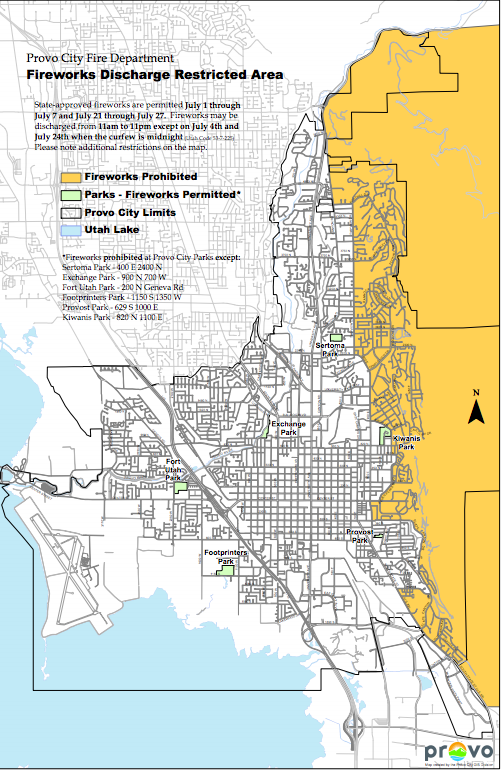The Bureau of Land Management re-issued a year-round fire prevention order for select counties in the West Desert District, including Utah County.
“With recent record temperatures, low humidity and strong winds, the vegetation in the West Desert is drying out quickly. Additionally, Northern Utah had 15 human-caused fires over last weekend,” said Erik Valdez, West Desert District fire management officer, in a press release.
These year-round restrictions include fireworks, exploding targets, sky lanterns, and tracer and incendiary ammunition.

Valdez said outdoor enthusiasts should use caution and be prepared when recreating in the West Desert District during the dry summer months. He recommended keeping water, a shovel and a fire extinguisher handy, according to the press release.
Brian Cottam, state forester and director of the Utah Division of Fire, Forestry and State Lands, said Provo is at risk for wildfires since it is surrounded by mountains and wild lands.
Cottam said there are wildland-urban interface zones — areas with homes intermixed with wild land — in Utah. He said the homeowners housed in wildlife areas are given instructions about preparedness for and prevention of wildfires.
“We talk about what to do for preparedness, like moving flammable things away from the house,” Cottam said.
Cottam said weather and human cause are about the same, percentage-wise, in causing wildfires.
“We can’t control the weather, but if the public makes better decisions in fire prevention, then that’s all the less risk, cost and danger to the land, the public,” Cottam said. “The best way to contain a fire is to never have it start.”
Provo Fire Marshal Kevin Paxton said more wildfires this year have been caused by humans than weather.
“This year, we’ve already had fires that were started illegally by fireworks, Chinese lanterns and kids playing with matches and lighters,” Paxton said.
Paxton said programs like Firewise USA help Provo residents be prepared for a wildfire. He said the program is geared toward educating communities on clearing pine needles from rain gutters and taking care of weeds, which can catch fire and spread the fire.

Ryan Rasmussen, associate director of emergency management at BYU Risk Management, said BYU has an emergency plan in case of a wildfire is close to campus.
“BYU maintains an emergency operations plan that is an all-hazards incident management plan. Since we cannot plan for every possible situation, we plan for how we will manage any incident no matter what it is,” Rasmussen said in an email.
Rasmussen said he encourages all BYU departments and colleges to have an emergency plan, as well. He said his office provides guidance based on guidelines it receives from the Federal Emergency Management Agency, the Department of Homeland Security and the Department of Education.
Rasmussen said in the event of an emergency a mass alert will be sent to all students, faculty and staff who have registered their contact information in their Route Y account.
Rasmussen said many classes related to emergency and disaster preparedness are available to students.
“The Risk Management Department, office of Emergency Management and Fire and Life Safety work hard to ensure the safety of students, faculty and staff during emergencies or disasters,” Rasmussen said. “We also work very close with Provo City when developing plans for managing emergencies and disasters on campus.”




